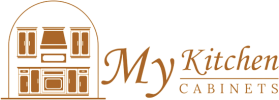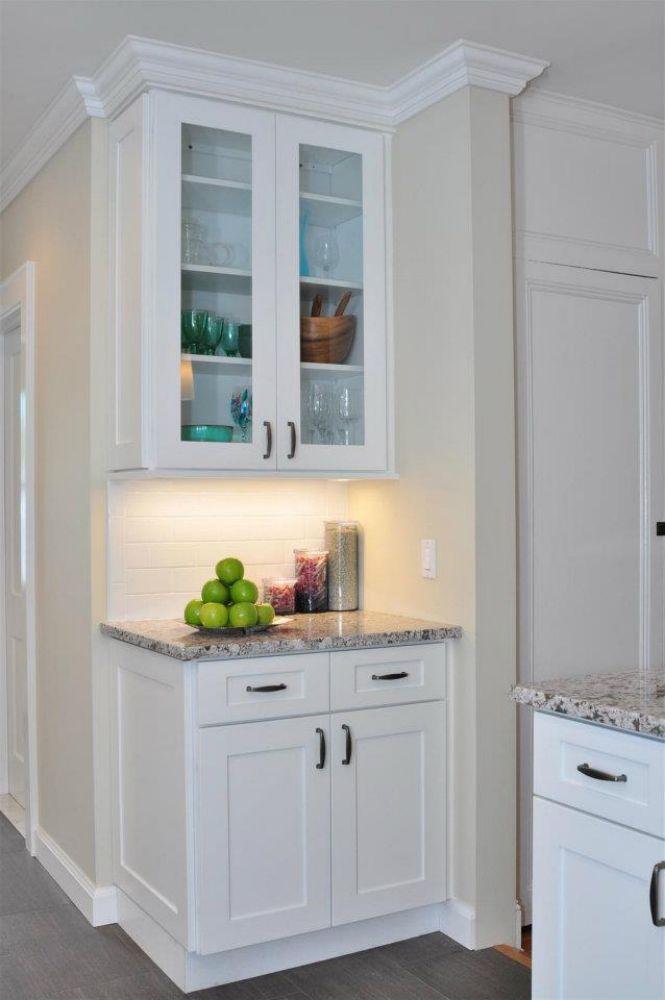Investing in Style and Value: Understanding the Return on Kitchen Cabinet Upgrades
Few home improvement projects deliver as much impact as a kitchen remodel. From transforming your home’s aesthetic to increasing functionality and property value, updating your kitchen can be both a practical and financial investment. Among all remodeling components — countertops, flooring, or appliances — kitchen cabinets often carry the greatest weight in determining the space’s overall appeal and value.
Whether you’re preparing to sell your home or simply want to enhance your living experience, knowing the potential return on investment (ROI) for upgrading cabinets helps you make informed, strategic decisions. High-quality cabinetry can elevate a modest kitchen into a luxurious focal point, offering durability, beauty, and efficiency that lasts for years.
At kitchen cabinets by My Kitchen Cabinets, homeowners can explore premium designs that combine craftsmanship with long-term value. Our collections are built to deliver not just aesthetic excellence but a strong ROI — ensuring every dollar spent becomes an investment in comfort, durability, and resale appeal.
The Role of Kitchen Cabinets in Home Value
Kitchen cabinets account for roughly 25–35% of a total kitchen remodel budget, making them one of the most significant expenses. Yet they also provide the highest visual and functional return. When buyers or appraisers evaluate a home, the kitchen is almost always their focal point — and well-designed cabinetry sets the tone for quality.
Why Cabinets Matter Most in Valuation
-
First Impressions: Cabinets occupy the largest visual area in a kitchen, creating the space’s defining look.
-
Functional Efficiency: Well-planned storage and layout improve daily use and overall satisfaction.
-
Perceived Quality: High-end cabinetry signals craftsmanship, influencing both desirability and pricing.
-
Longevity: Durable materials and finishes reduce long-term maintenance, adding value over time.
A beautiful kitchen featuring modern, sturdy cabinets instantly enhances your home’s perceived worth — even if the rest of the remodel is modest.
What Is the Average ROI for Upgrading Kitchen Cabinets?
While ROI can vary based on materials, installation quality, and regional housing markets, national remodeling data suggests that upgrading kitchen cabinets yields an average return of 60–80%.
ROI Breakdown by Upgrade Type:
-
Full Cabinet Replacement:
-
ROI: 65–75%
-
Ideal for outdated or damaged kitchens. Provides a complete aesthetic and functional transformation.
-
-
Semi-Custom or Stock Cabinets Upgrade:
-
ROI: 60–70%
-
Great balance between quality and cost efficiency for most mid-range homes.
-
-
Cabinet Refacing or Refinishing:
-
ROI: 70–80%
-
Perfect for structurally sound cabinets that need a visual refresh. Involves new veneers, doors, and hardware.
-
-
Luxury Custom Cabinets:
-
ROI: 55–65%
-
Offers long-term durability and uniqueness, often appealing to high-end buyers.
-
While the ROI might not always reach 100%, the enhanced comfort, usability, and visual transformation contribute to significant lifestyle value — often just as important as financial return.
Factors That Influence ROI on Kitchen Cabinet Upgrades
Not all cabinet projects yield the same return. Understanding what affects ROI ensures you invest wisely and strategically.
1. Material Quality
Solid wood or plywood construction generally offers better long-term value than particleboard or MDF. Premium materials resist warping, cracking, and humidity, which protects your investment.
2. Cabinet Style and Finish
Timeless designs like Shaker, flat-panel, or transitional cabinets appeal to more buyers than ultra-trendy styles. Neutral finishes such as white, gray, or natural wood tones maintain long-term appeal.
3. Craftsmanship and Hardware
Soft-close hinges, dovetail joints, and high-quality pulls convey craftsmanship and refinement, increasing perceived value.
4. Layout and Storage Efficiency
Functional upgrades — pull-out trays, lazy Susans, and hidden organizers — improve usability and make daily tasks easier.
5. Local Housing Market
In competitive real estate markets, a modernized kitchen can be the deciding factor for potential buyers.
6. Installation Quality
Even top-tier cabinets can lose value if improperly installed. Professional installation ensures precision alignment and durability.
When these factors align, cabinet upgrades become one of the most profitable home improvements available.
Comparing ROI: Kitchen Cabinets vs. Other Home Improvements
Cabinet upgrades consistently outperform many other home improvements in terms of ROI.
| Project Type | Average ROI |
|---|---|
| Minor Kitchen Remodel (cabinet refacing, new hardware, paint) | 77–83% |
| Major Kitchen Remodel (cabinet replacement, layout changes) | 60–75% |
| Bathroom Remodel | 55–65% |
| Window Replacement | 60–70% |
| Deck Addition | 65–75% |
| Basement Remodel | 50–60% |
These figures illustrate why cabinets are central to any high-impact renovation. They’re functional, visually dominant, and can dramatically influence resale potential.
Cabinet Refacing vs. Replacement: Which Offers Better ROI?
For homeowners torn between refacing or replacing, the decision depends on the cabinet’s current condition and long-term goals.
Cabinet Refacing:
-
Involves replacing doors, drawer fronts, and veneers while keeping the existing structure.
-
Pros: Lower cost, faster completion, minimal disruption.
-
Cons: Does not improve internal layout or storage efficiency.
-
ROI: 70–80%
Cabinet Replacement:
-
Involves removing old cabinets and installing new ones entirely.
-
Pros: Fully customizable design, improved storage, longer lifespan.
-
Cons: Higher cost and longer installation timeline.
-
ROI: 60–75%
If the cabinet boxes are sturdy and well-designed, refacing provides the best financial return. However, for outdated or poorly laid-out kitchens, replacement remains the smarter investment for long-term value.
How the Quality of Kitchen Cabinets Affects ROI
Cabinets are available in stock, semi-custom, and custom categories — each impacting cost, design flexibility, and return differently.
Stock Cabinets
-
Pre-manufactured and mass-produced in standard sizes.
-
ROI: 60–65%
-
Ideal for budget-conscious renovations and quick installs.
Semi-Custom Cabinets
-
Offer adjustable sizes, materials, and finishes.
-
ROI: 65–75%
-
Perfect balance of affordability, design flexibility, and quality.
Custom Cabinets
-
Fully tailored to your space, style, and needs.
-
ROI: 55–70% (higher for luxury homes).
-
Long-term value through durability, personalization, and craftsmanship.
Ultimately, semi-custom cabinetry delivers the best combination of ROI and overall satisfaction for most homeowners.
How Kitchen Cabinet Upgrades Increase Resale Appeal
Cabinet upgrades appeal to both the heart and logic of homebuyers. A modern kitchen communicates care, cleanliness, and sophistication — all key selling points.
1. Instant Visual Impact
Updated cabinetry creates a “wow” factor that photographs beautifully in listings and attracts online buyers.
2. Improved Functionality
Homebuyers love kitchens with efficient storage and smart organization, such as pull-out shelves and soft-close drawers.
3. Enhanced Durability and Maintenance
New cabinets reduce the likelihood of future repairs, appealing to buyers seeking move-in-ready homes.
4. Cohesive Design Aesthetic
Coordinated finishes, colors, and hardware help unify the kitchen’s overall look, signaling thoughtful design.
When buyers walk into a kitchen that feels fresh, functional, and high-quality, they’re often willing to pay more.
Regional and Market-Based ROI Variations
The return on kitchen cabinets varies depending on where you live and your home’s price range.
High-Demand Urban Areas:
Luxury buyers in cities like Los Angeles, New York, and San Francisco often expect high-end finishes and custom cabinetry. Here, well-executed upgrades can yield returns closer to 80% or more.
Suburban and Mid-Range Markets:
Semi-custom or professionally refaced cabinets deliver the best ROI — usually 65–75%.
Budget-Conscious or Rental Properties:
Simple stock cabinets or refinishing existing ones can still produce 50–60% ROI, particularly when balancing cost with improved appearance.
Matching your cabinet investment to your home’s market value ensures optimal return.
Design Trends That Maximize ROI
Design choices play a huge role in maintaining long-term value. Overly trendy or niche designs can reduce resale potential, while timeless styles stand the test of time.
Top ROI-Boosting Trends:
-
Shaker-Style Doors: Classic, versatile, and universally appealing.
-
Neutral Color Palettes: Whites, grays, and natural woods enhance spaciousness.
-
Two-Tone Finishes: Adds sophistication without over-customizing.
-
Matte Finishes: Provide a modern look with easy maintenance.
-
Open Shelving Pairings: Mixes aesthetic openness with traditional cabinetry.
-
Sustainable Materials: Eco-friendly options like bamboo or reclaimed wood appeal to modern buyers.
Timeless, functional designs tend to sustain their value even as styles evolve.
Cost vs. Value: Balancing Budget and Impact
When planning cabinet upgrades, focus on value-driven design — balancing cost efficiency with lasting appeal. Overspending on ultra-luxury materials in an average neighborhood may not yield a proportional return. Conversely, cutting corners on cheap materials can reduce perceived quality and resale potential.
Tips for Maximizing Value:
-
Prioritize Quality over Quantity: Fewer cabinets with superior construction outperform low-grade mass installations.
-
Upgrade Key Features: Add soft-close drawers, full-extension slides, and concealed hinges.
-
Use Professional Installation: Skilled craftsmanship ensures your investment looks and performs beautifully.
-
Pair Cabinets with Complementary Features: Coordinate with quartz or granite countertops and modern hardware for cohesive design.
-
Maintain Consistency: Choose colors and finishes that blend well with the home’s overall aesthetic.
Striking the right balance guarantees both functional satisfaction and financial reward.
The Long-Term Value Beyond ROI
While ROI focuses on monetary gain, the intangible benefits of upgrading kitchen cabinets are equally significant:
-
Enhanced Daily Enjoyment: Improved layout and aesthetics make meal prep and entertaining more enjoyable.
-
Reduced Maintenance Costs: Durable materials require fewer repairs and replacements.
-
Energy Efficiency: Newer designs can improve lighting and airflow, indirectly saving energy.
-
Healthier Living: Low-VOC finishes and eco-certified materials promote better indoor air quality.
A great kitchen cabinet upgrade enriches your lifestyle, not just your home’s financial value.
Conclusion
Upgrading your kitchen cabinets offers one of the strongest returns on investment in home renovation. With average ROIs between 60–80%, cabinet improvements combine functional efficiency, aesthetic enhancement, and lasting resale appeal.
By choosing quality materials, timeless styles, and professional installation — like those offered by My Kitchen Cabinets — homeowners can maximize both financial and personal rewards. Whether you choose to reface, replace, or fully customize your cabinetry, your kitchen’s transformation will pay off in value, comfort, and pride of ownership.
Ultimately, investing in new cabinets isn’t just about increasing property value — it’s about creating a space that brings joy and functionality every day while positioning your home as a desirable asset for the future.
Frequently Asked Questions (FAQs)
1. What is the typical ROI percentage for new kitchen cabinets?
Most homeowners can expect a 60–80% return on investment, depending on materials, installation quality, and local market conditions. Refacing projects often yield the highest returns.
2. Do custom kitchen cabinets offer a better ROI than stock cabinets?
Custom cabinets don’t always yield a higher percentage ROI, but they provide greater longevity, functionality, and appeal to luxury buyers — which can lead to faster sales and stronger offers.
3. How long do kitchen cabinets typically last?
High-quality cabinets from reputable manufacturers can last 20–30 years or more, especially when made from solid wood or plywood and properly maintained.
4. Should I reface or replace my cabinets for the best ROI?
If your cabinet boxes are structurally sound, refacing often provides a better ROI (up to 80%). Replacement is ideal for outdated layouts, damage, or when upgrading to premium designs.
5. How can I boost ROI beyond cabinetry alone?
Pair new cabinets with complementary updates like quartz countertops, modern lighting, and energy-efficient appliances. Together, these improvements enhance both functionality and resale value.
Read: How do I choose kitchen cabinets that blend with open shelving?
Read: How do I pick kitchen cabinets that work with quartz or granite countertops?

